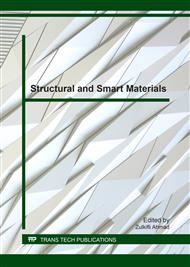p.24
p.30
p.35
p.40
p.46
p.51
p.58
p.63
p.68
Effects of Cold Rolling on Microstructure and Anomalous Thermal Expansion Behaviors of Ti-35Nb-2Zr-0.3O Alloy
Abstract:
Ti-35Nb-2Zr-0.3O (wt.%) alloy was melted under high-purity argon atmosphere in an electric arc furnace, followed by cold rolling. The effects of deformation process on microstructures and thermal expansion behaviors were investigated by OM, XRD and TMA. Results showed that the stress-induced α" martensitic transformation occurs after cold rolling. The solution treated sample exhibits normal thermal expansion along the rolling direction, and the thermal expansion rate increases with the increase of temperature. After cold rolling, thermal expansion behavior is polarized (negative thermal expansion occurs along rolling direction and normal thermal expansion higher than solution treated sample occurs along transverse direction). The thermal expansion rate along rolling direction decreases with the increase of reduction. The 40% cold deformed sample along rolling direction possesses Invar effect in a temperature range from 25°C to 350°C. The anomalous thermal expansion behaviors of cold rolled samples possibly relate to stress-induced α" martensitic transformation and β <110> texture evolution.
Info:
Periodical:
Pages:
46-50
Citation:
Online since:
February 2017
Authors:
Price:
Сopyright:
© 2017 Trans Tech Publications Ltd. All Rights Reserved
Share:
Citation:


